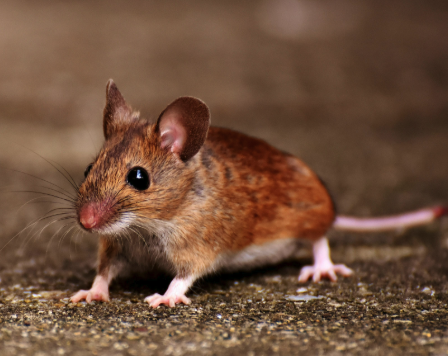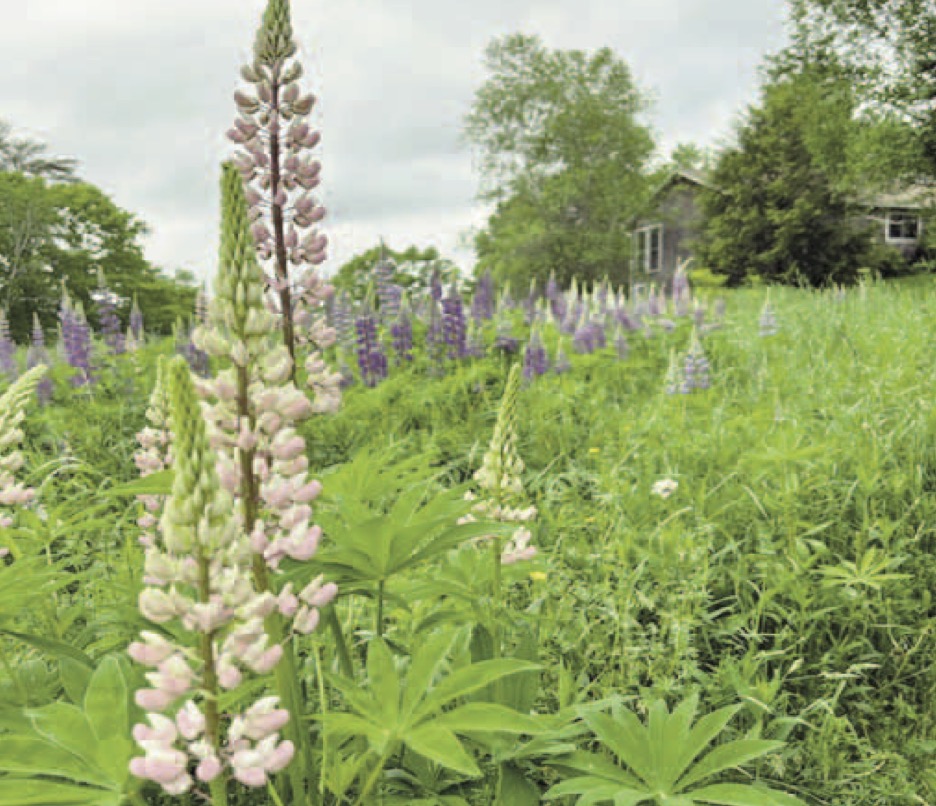SCORES & OUTDOORS: There’s a mouse in the house
/0 Comments/in Scores & Outdoors/by Roland D. Hallee
 by Roland D. Hallee
by Roland D. Hallee
The house mouse is becoming more and more of a nuisance at camp, and to say the least, are not welcome. My neighbors are fighting a constant battle with them, and until Saturday, my wife and I had been free of them. They have intruded our camp and when we uncovered our boat, it became apparent they had taken up residency over the winter. The discovery of five nests, and their destructive results, was, to say the least, discouraging. We spent the better part of the day cleaning up the mess.
The house mouse is a small mammal of the rodent family, characteristically having a pointed snout, large rounded ears, and a long and almost hairless tail. It is one of the most abundant species. Although a wild animal, the house mouse has benefited significantly from associating with human habitation to the point truly wild populations are significantly less common near human activity.
The house mouse is best identified by the sharp notch in its upper front teeth.
House mice have an adult body length (nose to base of tail) of three- four inches, and a tail length of two – four inches. The weight is typically 3⁄8 – 1 ounce. In the wild they vary in color from grey and light brown to black. They have short hair and some, but not all, sub-species have a light belly. House mice thrive under a variety of conditions; they are found in and around homes and commercial structures, as well as in open fields and agricultural lands.[9]
House mice primarily feed on plant matter, but are omnivorous. They eat their own feces to acquire nutrients produced by bacteria in their intestines. House mice, like most other rodents, do not vomit.
The social behavior of the house mouse is not rigidly fixed into species-specific patterns but is instead adaptable to the environmental conditions, such as the availability of food and space.
House mice have two forms of social behaviour. House mice in buildings and other urbanized areas with close proximity to humans are known as commensal. Commensal mice populations often have an excessive food source resulting in high population densities and small home ranges. This causes a switch from territorial behaviour to a hierarchy of individuals. When populations have an excess of food, there is less female-female aggression, which usually occurs to gain access to food or to prevent infanticide. Male-male aggression occurs in commensal populations, mainly to defend female mates and protect a small territory.
In open areas such as shrubs and fields, the house mouse population is known as noncommensal. These populations are often limited by water or food supply and have large territories. Female-female aggression in the noncommensal house mouse populations is much higher, reaching a level generally attributed to free-ranging species. Male aggression is also higher in noncommensal populations. In commensal populations, males come into contact with other males quite frequently due to high population densities and aggression must be mediated or the risk of injury becomes too great.
Both commensal and noncommensal house mouse males aggressively defend their territory.
In both agricultural and urban environments house mice are often preyed upon by the domestic catt.
House mice usually live less than one year in the wild, due to a high level of predation and exposure to harsh environments. In protected environments, however, they often live two to three years.
House mice usually live in proximity to humans, in or around houses and/or fields. They are native to India, and later they spread to the eastern Mediterranean about 13,000 BC, only spreading into the rest of Europe around 1000 BC. This time lag is thought to be because the mice require agrarian human settlements above a certain size. The house mouse first arrived in the Americas in the early 16th century. It was carried aboard on the ships of Spanish explorers and Conquistadors. About one hundred years later, it arrived in North America with French fur traders and English colonists. They have since been spread to all parts of the globe by humans.
Many studies have been done on mouse phylogenies to reconstruct early human movements. For example, one study suggests the possibility of a previously unsuspected early link between Northern Europe and Madeira on the basis of the origin of Madeiran mice. House mice were thought to be the primary reason for the domestication of cats.
However you look at it, a mouse in the house usually means some form of destructive behavior.
Roland’s trivia. question of the week:
Who was the last Red Sox pitcher to win 20 games in a season?
REVIEW POTPOURRI: Cultural Icons and Historic Recordings
/0 Comments/in Review Potpourri/by Peter Cates by Peter Cates
by Peter Cates
Sir Arthur Bryant
English historian Sir Arthur Bryant (1899-1985) was a principal of the Cambridge School of Arts, Crafts and Technology from 1923 to 1926 and raised its student body from 300 to 2,000.
His books were admired by former Prime Ministers Winston Churchill, Harold Wilson, Margaret Thatcher and others and became best sellers because of their narrative readability. The Age of Elegance: 1812-1822, from 1950, has a notable example of Bryant’s gift for entertaining vignettes in his sketch of Napoleon Bonaparte’s Foreign Minister, former Priest and notorious sleazeball Charles Talleyrand (1754-1838):
“Few people liked Talleyrand. Napoleon once described him as filth in silk stockings. He was the most consistent crook of his age. For a quarter of a century, through storm and terror , he had lived, survived, and triumphed by his wits. There were few crimes, including incest, of which he was not believed guilty. No one who saw his dirty, crafty, powdered face, with its half-closed eyes, villainous mouth, and slobbering, darting tongue, was left in any doubt as to the manner of man he was.”
He also described the French people of Napoleon’s time as “half monkey and half tiger.”
Unfortunately, Bryant was a Nazi sympathizer and wrote an introduction to a 1939 English translation of Mein Kampff in which he praised Adolf Hitler’s leadership qualities.
James Maguire
James Maguire’s 2006 Impresario is a biography of the most successful TV variety show host in American history, Ed Sullivan (1901-1974), whose program was seen every Sunday night from 1948 to 1971.
The guests who achieved the highest ratings for the Ed Sullivan Show were – who else? – Elvis Presley on September 9, and October 28, 1956, and the Beatles on February 9, 1964. With respect to Elvis’s gyrating hips, Maguire writes, “While his records flew off the shelves, letters of protest poured into newspapers and television stations across the country.”
The Bookshop
A 2024 history The Bookshop has chapters on several bookstores and the ups and downs of the business in competition with the insidious Jeff Bezos and his Amazon.
One chapter is on New York City’s Strand Bookstore which occupies all four sides of a block. Its founder Benjamin Bass was arrested in 1939 for selling 150 stolen copies of a law book but claimed he was innocent. After a friend testified on his behalf, the judge dismissed the case.
Bass confided to the friend as they left the courtroom, “After you finished talking, I had almost convinced myself that I hadn’t known that those were stolen.”
* * * * * *
Offenbach: Apache Dance; Serradell La Golondrina. Nathaniel Shilkret conducting the Victor Salon Orchestra. Victor 21055, ten inch 78, recorded 1926-27.
Shilkret’s dozens of charming shellacs which ranged from classical composers to dance music include this early example of crossover music – the Apache Dance by French composer Jacques Offenbach and side two’s very popular Mexican love song La Golondrina.
* * * * * *
Rossini/Respighi: La Boutique Fantasque; Ibert: Divertissement; and Piston: The Incredible Flutist. Arthur Fiedler conducting the Boston Pops. RCA Victor Red Seal LM-2084, 12-inch LP, recorded 1956.
The three compositions here are examples of classical music not taking itself so seriously. Ottorino Respighi (1879-1936) was best known for the Pines of Rome, Fountains of Rome and Roman Festivals which are massive monumental orchestral showpiece demanding more than 100 musicians.
La Boutique Fantasque is a collection of Rossini’s miniatures which Respighi orchestrated with exquisite results.
* * * * * *
Jacques Ibert (1890-1962) composed the witty Divertissement as incidental music for a French play during the 1920s. Since then it’s stood on its own as a boisterous romp for Orchestra and makes fun of Mendelssohn’s Wedding March.
Born in Rockland, Maine, Walter Piston (1894-1976) composed the Incredible Flutist in 1938, its world premiere conducted by Arthur Fiedler at a Pops concert that year.
Fiedler recorded the piece not long after its world premiere on Victor 78s and redid it in 1956. The score depicts a nighttime invasion of a quiet village by a traveling circus.
Piston’s grandfather Antonio Pistone emigrated from Genoa, Italy, to Maine and changed his name to Anthony Piston.
* * * * * *
Bruch: Violin Concerto #1 – Yehudi Menuhin, violin, with Pierre Monteux conducting the San Francisco Symphony Orchestra. Victor Red Seal DM-1023, three 12-inch 78s, recorded 1945.
German composer Max Bruch (1838-1920) was best known for his Scottish Fantasy for violin and orchestra; the Kol Nidrei for cello and orchestra and this very beautiful 1st Violin Concerto. In their 1945 collaboration, England’s Yehudi Menuhin and Hancock Maine’s summer resident Pierre Monteux achieved a very powerful and rapturous performance in which one truly sensed the violinist and Maestro in full accord with each other.
* * * * * *
A 1941 movie, The Devil and Daniel Webster, has Walter Huston (1883-1950) portraying Old Scratch himself offering an impoverished New Hampshire farmer, Jaber Stone, seven years of good luck for his soul. When the seven years are running out, Stone runs to Daniel Webster to plead his case.
James Craig (1912-1985) did good work as Stone, Edward Arnold (1890-1956) was a decently eloquent Daniel Webster, while Walter Huston almost stole the show with his extraordinarily built up characterization of Scratch from the folksy stranger chewing on a carrot through the laughing reminder to Stone that payment is due soon and in a split second changing the laughing smile to a stone cold frown via which he intends to collect.
A couple of items relating to the original 1936 short story by Stephen Vincent Benet (1898-1943):
The story mentions that Webster wrestles every morning with his ram Goliath. At the end of the story after Webster rescues Stone from having to pay his debt, Old Scratch was never seen again in New Hampshire. Not so sure about Massachusetts.
VETERANS CORNER: Where did the money go for long-term care facility?
/0 Comments/in Veteran's Corner/by Gary Kennedy by Gary Kennedy
by Gary Kennedy
I’m sure many of you veterans out there are dealing with subjective as well as objective data, when you not only view, but experience the Veterans Administrations, Medical administrative as well as its physical plant. I have spoken with many of you both as fellow vets, friends and as an advocate on issues which affect us in all related ways. When we look at VA those of us who are not new to the physical plant can see changes that have been carved out of an established bastion of safety and well being to, “What’s going on”?
Several years ago funds were allocated to build an extended care facility for veterans. Many veterans were excited about the fact that a possible long term home would become available to them. I guess we all know many vets who have left us since that promise was made. It’s so sad that they never had the chance to enjoy that promised haven. It is wonderful sharing time with those who have served our country.
I do hope the new National Administration takes a good look at where these dollars, which were paid in taxes, went. Then we have the issue of the gym and swimming pool which was built more than a half century ago and used for our veterans. This was not only given for recreational purposes but for physical therapy. It was a wonderful plus to our VA which no other facility had.
Covid reared its ugly head from China it is believed and that gave opportunity for the administration to close those veterans assets down to never reopen, at least not to disabled veterans. That hurt many of us deeply. Of course it is non-veterans who rule the roost. I personally made many objections in many places and in many ways but to no avail. There was a plan in the works forged by the top administration to use the gym, for a small fee for employees only. I guess that was the beginning of the obvious loss of employee population and VA’s new transitional period to the 21st century. The swimming pool became a storage locker for derelict hospital beds and other trash. What a shameful disgrace and slap in the face to our veterans!
Then and now the attrition rate has reached unsustainable proportions. We have lost great doctors from most, if not all departments. The advent of allowing veterans to use outside doctors became the thing. It was meant originally to circumvent the problem we had getting care to veterans located in remote areas. That was a great idea on its face but control was lost and politicians became involved due to the complaints of their constituents. It became a political football with a very short lived life expectancy.
It seems so simple just to avail ourselves to the outside world, to take the slack, thus saving time and money. The one thing they didn’t consider and don’t want you to know is; how do we pay for this? This doesn’t fit on the balance sheet of our true capitalistic way of life. I belong to groups who say, “you don’t want to go near socialism”. In socialistic states you can’t get the financial credit for your work as you can in a federalistic form of government. Republicans and Democrats both realize this but either they really don’t care about you and I or they have an agenda of their own.
So now the quality of care is at an all time low because of employees being overworked and under paid. We all know that most physicians make a considerable salary. The USA average is $372,283 annually. However, a high end orthopedic surgeon can bring home $745,000 and family medicine hone in at around $289,000. The government has rules, if applied, which states, federal employees can’t earn more than the President of the USA.
Don’t take me wrong, VA has many pluses as a career goal but money isn’t one of them. The reason I am discussing Capitalism with you is not political; it is trying to protect the quality of care we use to have. Doctors receiving their first financial statement regarding veteran fees are agast at what the government is paying them to care for our veterans. I personally have already had two doctors refuse to see me anymore because the VA only paid them less than a third of the bill.
One doctor’s manager told me that the service I received was specialty medical and that the government wasn’t realizing that this particular office paid exceptionally high salaries as their employees were all specialists and the amount the VA paid didn’t even cover their expenses. That is a sad truth about millions who are thanked for their service. I do hope the new federal administration will take some hard looks at what lies ahead. This problem at this level begins at administrations door. Now we are hiring some non veteran employees who are very young with no veteran experience. Take a look next time you visit Togus VA. How many do you remember from five years ago? The limitations will continue to grow.
I am getting very tired and time is running out for me.
I pray constantly for all my brother and sister veterans. I am sure there is an answer. I hope this new administration in Washington will listen to we, the least of us because the answers have just begun to show us the obvious and it’s now that the problem can be solved. Talk to us now as you did when you first needed us. We are more than eager to help solve our problems. Don’t let the Peter Principle lodge itself in one of our most needed institutions.
If you would like to share your thoughts privately go to garyek55@gmail.com. God bless and keep you and yours safe.
Give Us Your Best Shot! for Thursday, June 26, 2025
/0 Comments/in Give Us Your Best Shot!/by Website EditorTo submit a photo for this section, please visit our contact page or email us at townline@townline.org!
QUINN MINUTE: Good manners
/0 Comments/in Quinn Minute/by Rix Quinn by Rix Quinn
by Rix Quinn
Did you know that 4,000 years ago people lived without rules? With no restrictions, imagine the chaos, imagine the confusion…imagine the fun.
That changed when Babylon’s King Hammurabi pulled out his ball-point chisel, and carved his 282-law Code.
Among his commands: If you owed somebody a debt, you could give them your spouse. This became a primitive form of “no-fault divorce.”
We continued to refine human interaction with “etiquette,” or rules of polite conduct. These rules vary by country.
For instance, in a mixed group in this country, a man should not burp. But if he’s with guys, he can burp loudly, and a friend can record it for playback at the company picnic.
There are 17,000 rules of “good taste,” many concerned with mealtime. Like, if we don’t chew with our mouths closed, food could fall out.
If we don’t brush our teeth, they could fall out too. And if they’re chewing at the time, that’s really bad.
Other critical table manners:
1. If served overcooked steak, do not ask the server ”What was this animal originally?”
2. The long fork on the plate’s left should never be used as a back scratcher.
3. Pass the rolls…do not throw them.
Yes, good manners are like a high-speed train. They can take you a long way if you stay on the right track.
Would you like to know more about the generation called Baby Boomers? You can order Rix’s book on that generation today. Just go to this link.
MAINE-LY GARDENING: What’s in the Garden? Greens!
/0 Comments/in Maine-ly Gardening/by Jude Hsiang
 by Jude Hsiang
by Jude Hsiang
Some of the first local foods to enjoy each year are greens, which come from a variety of plants. Many of us have been enjoying a variety of leafy greens from our gardens for weeks now. If you missed the opportunity to plant them from February through April this year, some of these vegetables can be planted later in summer for fall crops. If you are fortunate enough to have a greenhouse, even an unheated one, your growing season will last from late winter until well into fall. Both the University of Maine Extension Service and the Maine Organic Farmers & Gardeners Association have compiled planting schedules to help gardeners learn when to start seeds indoors for transplanting or to plant directly outside as spring advances. And there are lots of herbs to grow in small pots in the house for year-round use.
Children may dislike the healthy leafy greens they are urged to eat because they are more sensitive to strong or bitter flavors. But as we grow up, we find a little arugula or radicchio gives a pleasant tang to a salad. We may discover that with the right preparation or seasoning, spinach, kale, mustard greens and other strong-tasting greens join the list of seasonal treats we look forward to every year.
Beyond the familiar greens we grow or buy, like the many types of lettuce and leafy greens that quickly come to mind, there are some other available vegetables to add to the menu. We grow beets and radishes for the roots but might forget that their leaves are edible and delicious. When thinning a crowded row of tiny plants, we can save those little leaves to add to all sorts of dishes. While the roots are maturing, just sip off a few leaves from time to time. When it comes time to harvest beets remember that the tops provide a tasty dish. Radish will enhance a clear or vegetable soup. Fava beans, and some other varieties, tend to develop side shoots. While the main stem is producing the beans the tender shoots can be gathered for cooking. Pea shoots are tasty, too, and as peas are an early season plant, the shoots can be sniped as main production begins to slow.
Other vegetables may already show up in the garden as we water and weed. Lamb’s quarters, usually thought of as a weed, are so tasty that many people allow them to grow among the planted vegetables for a while, then harvest them to cook before they get large, woody and compete for nutrients with the things planted on purpose. Lamb’s quarters stir fried with garlic is delicious, milder than spinach, and free.
Among the other greens that nature provides are fiddleheads. When foraging it’s important to get permission to collect them on public and private land. Maine has many ferns species, and some can look a bit like the ostrich ferns that we eat. Learning to recognize fiddleheads is not hard, but it’s important to collect the edible ones. As with any wild plant, leaving plenty for future growth is vital.
Ramps are another spring delight if you know where to look and are careful to avoid over harvesting them. If you have the right conditions, you can purchase seeds or plants for your yard, but it’s important to be confident that the seller is harvesting them ethically. Once they’re successfully established, you will want to allow them to spread naturally so you can enjoy some every year.
Enjoy the early greens while waiting for more delicious locally grown foods that are coming our way.
© Judith Chute Hsiang
Jude Hsiang Is a retired Extension Master Gardener instructor and member of the China Community Garden.
COMMUNITY COMMENTARY: What we need is a third party
/0 Comments/in China, Community Commentary/by Website Editor by Sheldon Goodine
by Sheldon Goodine
China resident
We see the debt clock ticking away on TV and getting higher every day. We are told the interest on this debt is the largest expense in the U.S. government, and if allowed to continue the U.S. government could go into default and we could lose our country. This brings up a lot of questions, who do we owe this debt to? What is the interest rate and is there a plan to repay this debt? To me, the answer is simple. Stop spending, overspending. Stop spending more than we take in!
Just about everyone agrees the swamp in Washington needs to be drained, and spending brought under control. We agree there is a lot of waste, fraud and abuse in the federal budget, but no one can agree on how to fix it and stop this financial bleeding.
The two-party system of government in our country is not working. The problem is too many Republicans, too many Democrats and not enough Americans in Washington. When the Democrats get a couple more seats, they control the government without input from Republicans, and vice versa. The score is Democrats 100 percent and Republicans zero percent; Republicans 100 percent and Democrats zero percent; in both scenarios the American people’s score is zero percent.
It’s time to bring a third party into the mix. A party that will work for and vote for the good of America and Americans. It will be the “American Party”. Then we can reduce the number of red states, reduce the number of blue states and greatly increase the number of red, white and blue states.
Put an end forever to party-only politics, get our spending under control, reduce the size of government, stop sending our dollars all over the world, especially to countries whose motto is “Kill Americans”.
One last thought, term limits. Both parties will not vote to limit terms of their members. So, we must do it for them in the form of the ballot. Stop voting for and sending the career politicians back to Washington every election period. It’s time to start over again and get this new “American Party” up and running with the people in charge of working for the good of all Americans. A government of the people, for the people, by the people.
REVIEW POTPOURRI: Patti Page; The Accountant
/0 Comments/in Review Potpourri/by Peter Cates by Peter Cates
by Peter Cates
Patti Page
Patti Page – Because Him is a Baby; Goodbye Charlie; Mercury 71510, seven-inch vinyl 45, recorded 1959.
Patti Page (1927-2013), along with Doris Day (1922-2019), were two fabulous golden girls of 1950s pop music in combining outstanding musical and commercial success in pop singing (Time and space limits me from naming several other personal favorites).
Born Clara Ann Fowler, in Oklahoma, one of her first musical gigs came at the age of 18 in her native state on a 15-minute local radio show sponsored by the Page Milk Company – hence her stage name. During the late ‘40s, she sang with a band in Chicago led by Benny Goodman who gave Peggy Lee a jumpstart in her career.
The windy city was also the home of Mercury Records where Page would record for over ten years. How Much is that Doggie in the Window; and The Old Cape Cod were huge hits during her Mercury years.
Interestingly, this 1959 coupling is one of Miss Page’s rarer records. The two songs combine her gifts for beautiful contralto singing and songs dealing with immature adults – (Because Him is a Baby) – and disloyal lovers — (Goodbye Charlie) – who cause chaos, themes similar to her 1951 megahit Tennessee Waltz, where “My friend stole my sweetheart from me.” (Around the same year, comedy band leader Spike Jones did his own Tennessee Waltz utilizing a chorus of cackling old ladies.).
The arrangements on the 1959 disc were imaginative ones by the gifted Pete Rugolo (1915-2011) with lovely woodwind and brass details. He did phenomenal scorings for the progressive big band jazz leader Stan Kenton whose music making was otherwise quite the distance from that of Miss Page.
In 1962, she appeared in the comedy film Boys Night Out with James Garner and Kim Novak and lent considerable charm to her role as a suburban wife.
The Accountant
During two successive evenings, I viewed the 2016 suspense film The Accountant and the 2025 The Accountant 2, starring Ben Afleck, as an autistic genius level accountant and highly lethal assassin of bad people, Christian Wolff.
Two films of his I have seen previously are the 2002 thriller Changing Lanes with Samuel L. Jackson and Amanda Peet; and the 2006 Hollywoodland in which Afleck portrayed actor George Reeves (1914-1959) who was the star of the justly successful TV series, The Adventures of Superman, which ran from 1951 to 1957.
The bio film was quite fascinating in its depiction of Reeves’s struggles with typecasting and Afleck’s facial resemblance to Reeves but at the same time the film was difficult to watch because I was so used to Reeves as Superman and couldn’t accept Afleck’s credibility in the role.
The merits of both Accountant films are of different degrees. The 2016 film has much in the blood and gore and narrow escapes which sustains interest at that level. The remake of 9 years later, while still dealing with highly dangerous criminals, has a much more nuanced development of character in Christian Wolff’s confronting of issues in his personal life and relationships. The visibly late middle aging of Ben Afleck, now 53 years old, is brought very consummately to bear in his portrayal of Wolff and his relationship with his younger brother Braxton, aptly portrayed by Jon Bernthal, from whom Christian was estranged for several years; Braxton is also a similarly lethal killer who doesn’t quite have the moral qualms of Christian.
However, he is immensely helpful to Christian as they reconcile and head to a remote Mexican compound to rescue several dozen children kidnapped by traffickers who now plan to massacre them for purposes of expediency.
Good supporting roles were provided by Portland native Anna Kendrick and John Lithgow in the 2016 film and J.K. Simmons in both 2016 and the remake.
***
Donizetti: La Favorita – Una vergine (Like an Angel); Florencio Constantino, tenor; Victor Red Seal 64090, ten-inch one-sided acoustic shellac disc, recorded May 22nd, 1907.
Tenor Florencio Constantino (1869-1919) didn’t have the pipes of Enrico Caruso but he did have a lovely lyrical high, middle and low register and gave a very nice performance of this aria. He had a solid career until a 1917 lawsuit resulting in a nervous breakdown led to his early death in a Mexico City hospital.
***
Jimmy Dorsey – Holiday for Strings; and Ohio; Decca 18593, ten inch 78, recorded 1944.
Clarinettist/bandleader Jimmy Dorsey (1904-1957) and older brother of Tommy Dorsey (1905-1956) recorded a very jazz swing rendition of David Rose’s famous Holiday for Strings and brought a captivating scoring for the brass section to a piece of music that is still crappy.
Side 2’s Ohio is a decent pop standard from the World War II years and featured in a 1944 musical, Four Jills in a Jeep.
Jimmy’s own records didn’t quite have the vibrant beauty of Tommy’s but he did have the immensely enjoyable singer Kitty Kallen, unfortunately not featured here.
FOR YOUR HEALTH: Understanding COPD
/0 Comments/in For Your Health/by Website Editor COPD stands for chronic obstructive pulmonary disease, a term used to describe chronic lung diseases, including emphysema and chronic bronchitis. Often, COPD is caused by inhaling pollutants, which includes tobacco smoking and second-hand smoke, but other causes of COPD can be fumes, chemicals and dust found in work environments, and genetics.
COPD stands for chronic obstructive pulmonary disease, a term used to describe chronic lung diseases, including emphysema and chronic bronchitis. Often, COPD is caused by inhaling pollutants, which includes tobacco smoking and second-hand smoke, but other causes of COPD can be fumes, chemicals and dust found in work environments, and genetics.
Two of the most common conditions of COPD include chronic bronchitis and emphysema.
Chronic bronchitis
Chronic bronchitis is a condition where your airways are inflamed. This causes mucus to build up, which can lead to symptoms including:
Frequent coughing or cough that produces a lot of mucus.
Wheezing
- A whistling or squeaky sound when you breathe.
- Shortness of breath, especially with physical activity.
- Tightness in your chest.
Emphysema
In emphysema, the walls between many of the air sacs in the lungs are damaged, causing the air sacs to lose their shape. The damage can also destroy the walls of the air sacs, leading to fewer and larger air sacs instead of many tiny ones. This makes it difficult to breathe.
Symptoms of COPD
Often, people may not recognize the symptoms of COPD until the disease has progressed. COPD can decrease the flow of air going in and out of your lungs, making it hard for you to breathe. Symptoms can vary from person to person, but these are the most common:
Increased shortness of breath/breathlessness. Frequent coughing (with and without mucus), wheezing, tightness in the chest. Unusual tiredness. COPD affects many people – chronic lower respiratory diseases, including COPD, are a leading cause of death in the United States.
If you think you are experiencing any of these COPD symptoms, discuss them with your doctor.
COPD causes and risk factors can vary from person to person, but can include: Smoking, exposure to air pollution, breathing secondhand smoke, working with chemicals, dust, and fumes, a genetic condition called alpha-1 antitrypsin deficiency, and a history of childhood respiratory infections.
The 4 Stages of COPD
A COPD diagnosis and assessments by your doctor can also help identify how far your COPD has progressed and what grade/severity you are. How fast COPD progresses can vary from person to person.
COPD can be classified into 1 of 4 grades based on your ability to breathe. This is determined by specific lung function tests.
Each grade is determined by a calculation taking into account the results of two breathing tests (spirometry), as well as other factors, which include your age, sex, and ethnicity.
The higher the grade (grade 4 being the highest), the more advanced your COPD is.
Grade 1
Severity of airflow obstruction: ≥80 percent of normal percent predicted FEV1.
Mild: Commonly, in this stage, COPD causes mild symptoms, and some patients have shortness of breath.
Grade 2
Severity of airflow obstruction: 50 to 79 percent of normal percent predicted FEV1.
Moderate: Many may seek help for COPD symptoms like shortness of breath.
Grade 3
Severity of airflow obstruction: 30 to 49 percent of normal percent predicted FEV1.
Severe: Typically, in this stage, COPD symptoms worsen and flare-ups may be more frequent.
Grade 4
Severity of airflow obstruction: <30 percent of normal percent predicted FEV1.
Very severe: This is known as the most severe stage of COPD.
Interesting links
Here are some interesting links for you! Enjoy your stay :)Site Map
- Issue for July 10, 2025
- Issue for July 3, 2025
- Issue for June 26, 2025
- Issue for June 19, 2025
- Issue for June 12, 2025
- Issue for June 5, 2025
- Issue for May 29, 2025
- Issue for May 22, 2025
- Issue for May 15, 2025
- Issue for May 8, 2025
- Issue for May 1, 2025
- Issue for April 24, 2025
- Issue for April 17, 2025
- Issue for April 10, 2025
- Issue for April 3, 2025
- Issue for March 27, 2025
- Issue for March 20, 2025
- Issue for March 13, 2025
- Issue for March 6, 2025
- Issue for February 27, 2025
- Issue for February 20, 2025
- Issue for February 13, 2025
- Issue for February 6, 2025
- Issue for January 30, 2025
- Issue for January 23, 2025
- Issue for January 16, 2025
- Issue for January 9, 2025
- Issue for January 2, 2025
- Sections
- Our Town’s Services
- Classifieds
- About Us
- Original Columnists
- Community Commentary
- The Best View
- Eric’s Tech Talk
- The Frugal Mainer
- Garden Works
- Give Us Your Best Shot!
- Growing Your Business
- INside the OUTside
- I’m Just Curious
- Maine Memories
- Mary Grow’s community reporting
- Messing About in the Maine Woods
- The Money Minute
- Pages in Time
- Review Potpourri
- Scores & Outdoors
- Small Space Gardening
- Student Writers’ Program
- Solon & Beyond
- Tim’s Tunes
- Veterans Corner
- Donate










